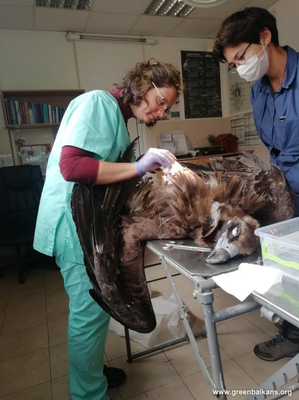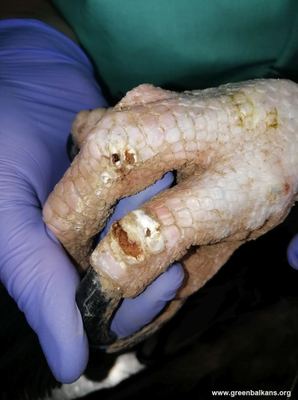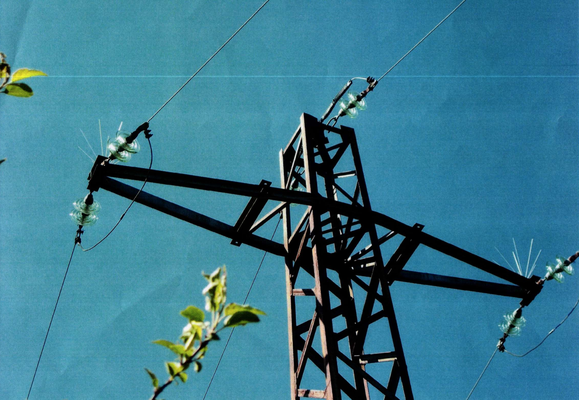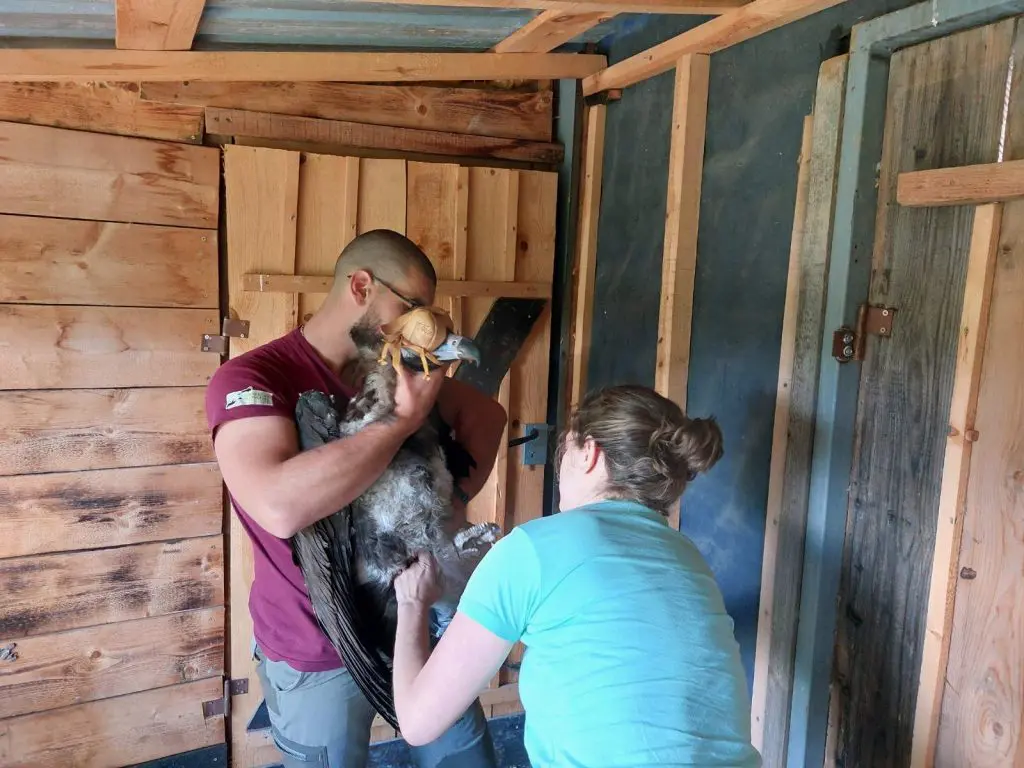
The Vultures Back to LIFE team went on the field to search for Cinereous Vulture Extremadura due to worrying data received by her GPS transmitter. Unfortunately, their worse fears were confirmed when they found the vulture dead, making Extremadura the first known Cinereous Vulture that died from electrocution in Bulgaria.
Extremadura’s reintroduction and movements
Extremadura was a female bird, imported from Spain and released in Bulgaria by the hacking method in Kotel in April 2019. She, along with the whole group of 10 vultures, adapted well to the release region. They embarked on long-distance wanderings with the onset of spring as they frequently visited the region of Central Balkan — some of them even reached the Vrachanski Balkan Nature Park, which is the westernmost part of the Balkan Mountain.
Discovery of Extramadura
Last Saturday on 21 March, Extremadura along with two more Cinereous Vultures undertook wanderings northwards, roosting in the region of Silistra. The worsened weather conditions on the next day trapped them and made their return to Kotel difficult. After a few attempts to return, Extremadura fell among an unknown region and landed to roost on the fatal power pylon. On Friday 27 March, a field assistant from the Vultures Back To LIFE project found Extremadura near Malogradets village in the Antonovo municipality. The team was only able to locate the dead vulture thanks to the satellite transmitter.
Necropsy
The team transported the carcass to the Green Balkans’ Wildlife Rehabilitation and Breeding Centre for a necropsy. External burn scars were apparent on the bird, which were caused by contact with electric power lines. Samples were also collected for toxicological analysis.
Source: Green Balkans
Update: Insulation of power line
The Vultures Back to LIFE team reported the incident that killed Extremadura caused by the hazardous powerline to the Environmental inspectorate, urging them to secure the poles. A couple of months later, the Regional office of Ministry of Environment and Waters informed the project team that the Electrical Company in charge has insulated four electric poles where Extremadura was killed. Well done to the relevant authorities that took action to insulate the pole, therefore preventing further electrocutions of birds after this lethal case.
Threats to vultures caused by energy infrastructure
Collisions with electrical cables are one of the biggest threats large raptors like vultures face. The Vulture Multi-species Action Plan (Vulture MsAP), co-developed by us here at the Vulture Conservation Foundation, and endorsed by the Convention for Migratory Species (CMS), identified the often overlooked threat to vultures posed by energy infrastructure particularly electrocution and collisions. Collision with energy infrastructure occurs when vultures are unable to distinguish the power line or wind turbine against the background of the natural vegetation as they fly near them.
Mitigating the threat of electrocution
Compared to preventing collisions, mitigating electrocutions is relatively straightforward, as the insulation of cables in high-risk poles is relatively easy and inexpensive. In the long term, selecting less dangerous pole designs, or even burying lines in high-biodiversity areas seem better options. There are many projects, including our own LIFE-funded projects such as LIFE Rupis, Vultures Back to LIFE, LIFE GYPHELP and LIFE Re-Vultures, that are working to tackle the threat of electrocution with electricity infrastructure. The MAVA Foundation is also funding projects across the eastern Mediterranean flyway to minimise the danger of electrocution and collision.
Vultures Back To LIFE

Led by the wildlife conservation charity Green Balkans, with activities also implemented by the Fund for Wild Flora and Fauna, and bringing together partners from Bulgaria, Spain and Germany, Vultures Back to LIFE aims to reintroduce the cinereous or Eurasian black vulture to Bulgaria. The team will transfer and release around 60 birds, some from captive-breeding, but mostly coming from wildlife rehabilitation centers in Extremadura (Spain) into the wild in Bulgaria as well as creating supplementary feeding stations and improving populations of wild herbivores, improving the nesting conditions and creating artificial nest sites and tackling some of the major threats to vultures in the country such as insulating electricity pylons and illegal use of poison in the nature.










